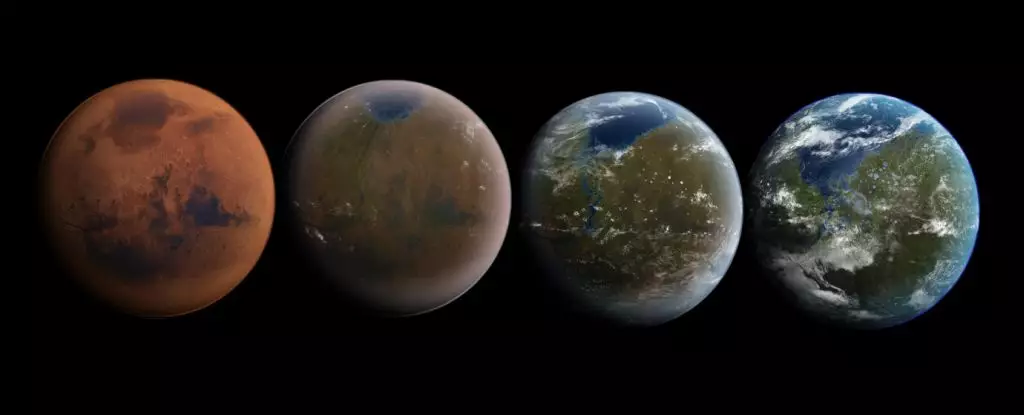The idea of establishing long-term human colonies on Mars has been a popular topic of discussion for quite some time now. However, the harsh conditions on the red planet pose a number of challenges. Mars is known for its extreme temperatures, with the median temperature sitting at a bone-chilling -64 degrees Celsius (-85 Fahrenheit). In order to make Mars habitable for human life, significant changes need to be made to warm up the planet.
Scientists have been exploring various methods to warm Mars, with the greenhouse effect being one of the most feasible options. Previous proposals have suggested pumping Mars’ atmosphere with greenhouse gases such as carbon dioxide and methane to trap heat and raise temperatures. However, Mars lacks the necessary ingredients for this strategy, making it expensive and challenging to implement.
Researchers, led by electrical engineer Samaneh Ansari of Northwestern University, have proposed a revolutionary new method to warm Mars using nanoscopic metal rods. These tiny metallic rods, similar in size to commercial glitter, would be released into the Martian atmosphere to create and maintain a greenhouse effect. According to the research team, this method is 5,000 times more efficient than previous strategies, making it a more feasible option for warming up Mars.
By releasing these nanorods at a sustained rate into the Martian sky, the researchers believe that the greenhouse effect created would lead to the melting of surface ice and the sublimation of carbon dioxide ice. Over time, this process would increase atmospheric pressure and warm up the planet by more than 28 degrees Celsius. While this would not make Mars habitable for humans directly, it would create a more hospitable environment for microbial life.
Despite the potential of this new method, there are still some challenges that need to be addressed. The researchers are unsure how long the nanorods would remain in Mars’ atmosphere, as the planet’s lack of a global magnetic field could lead to leakage into space. Additionally, there is a concern that the nanorods could attract water particles and fall back down to the surface as rain, posing a potential obstacle to the effectiveness of the strategy.
Despite the remaining challenges, the research conducted by Ansari and her colleagues opens up new possibilities for the future of Mars exploration. While there is still much work to be done, the idea of using nanoscopic metal rods to warm up the red planet brings us one step closer to the long-held dream of establishing a sustainable human presence on Mars. As we continue to study and refine this approach, the possibility of creating a habitable environment on Mars becomes more achievable than ever before.


Leave a Reply